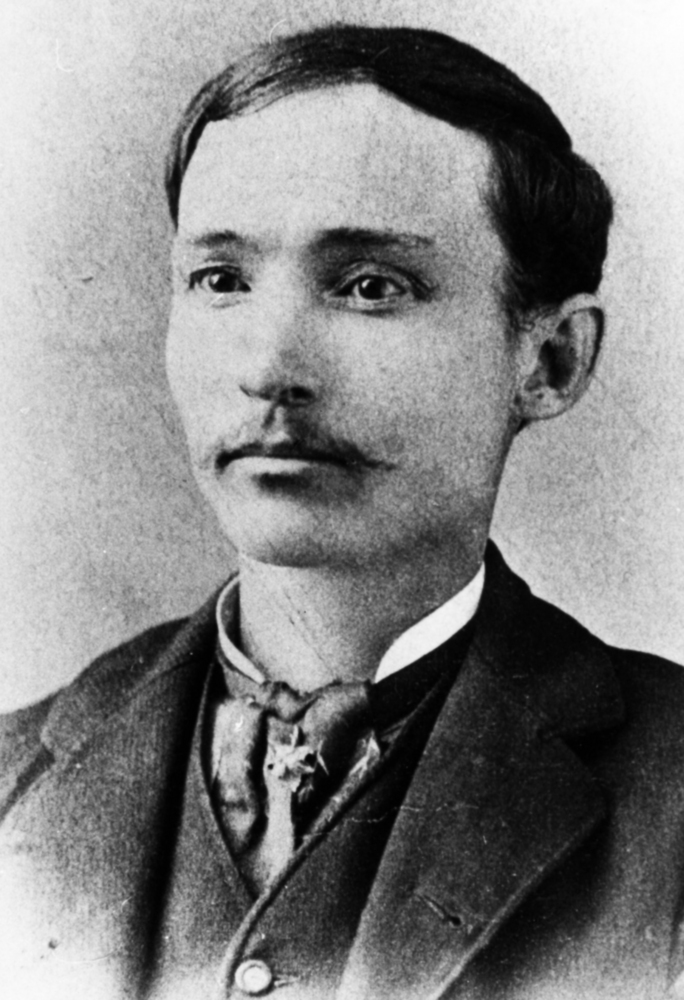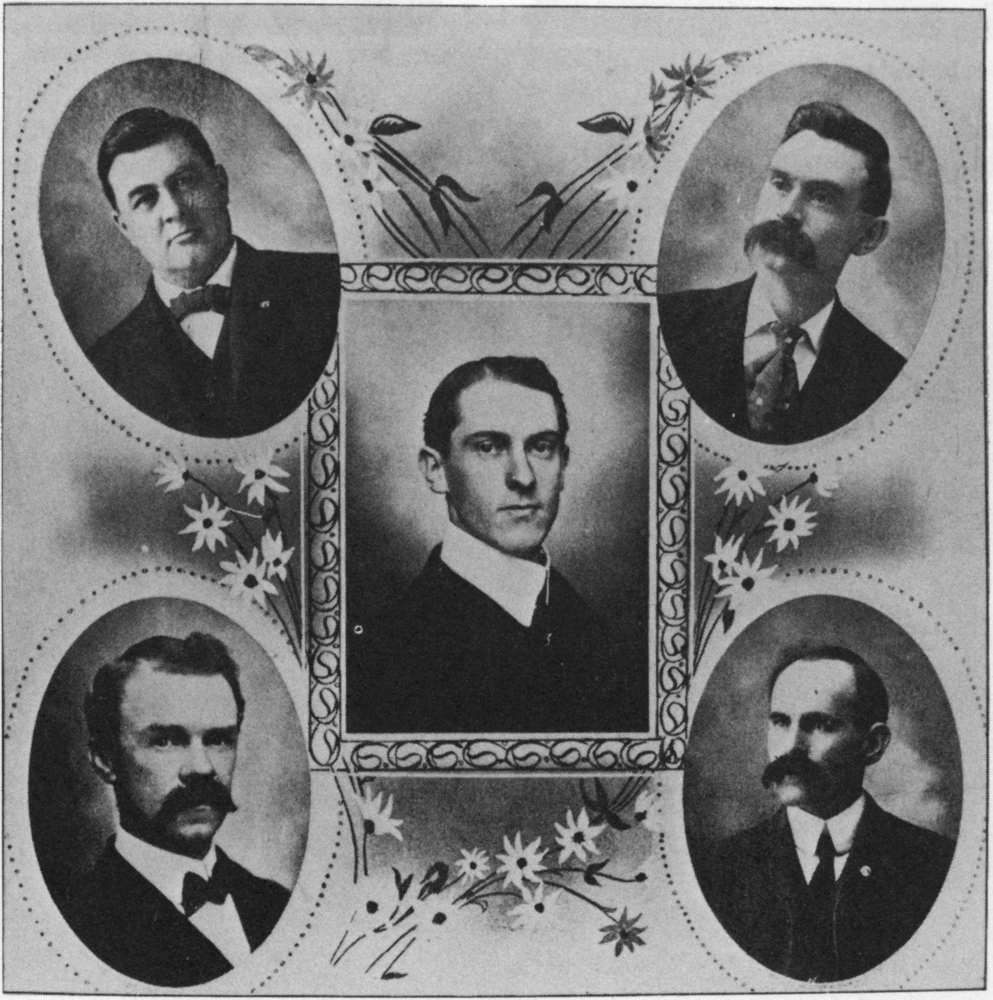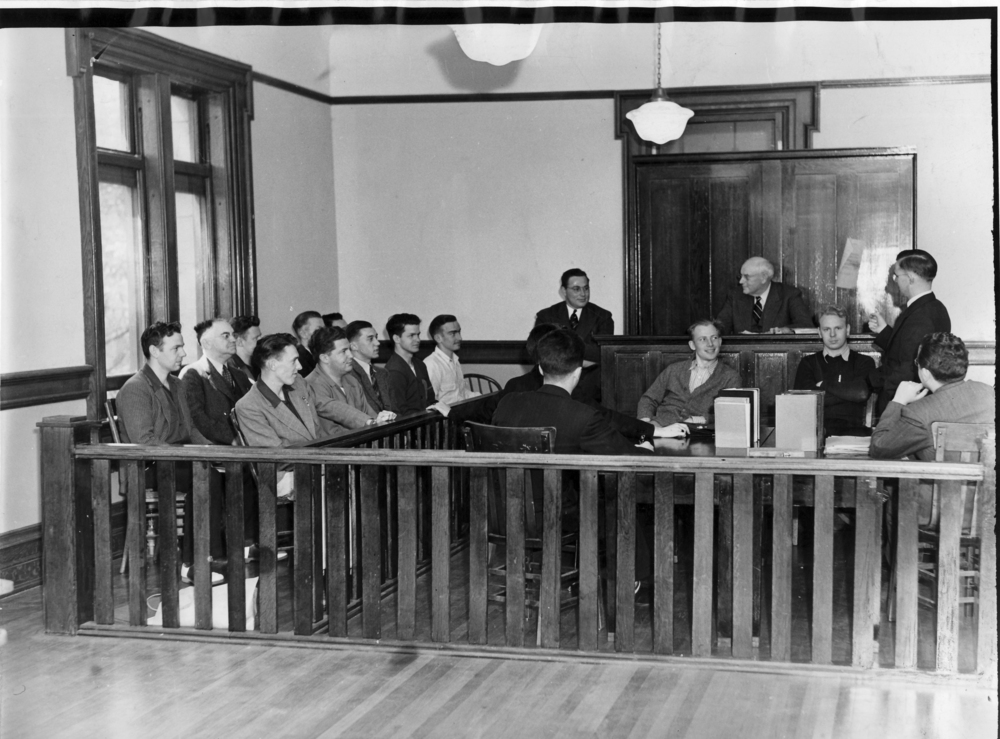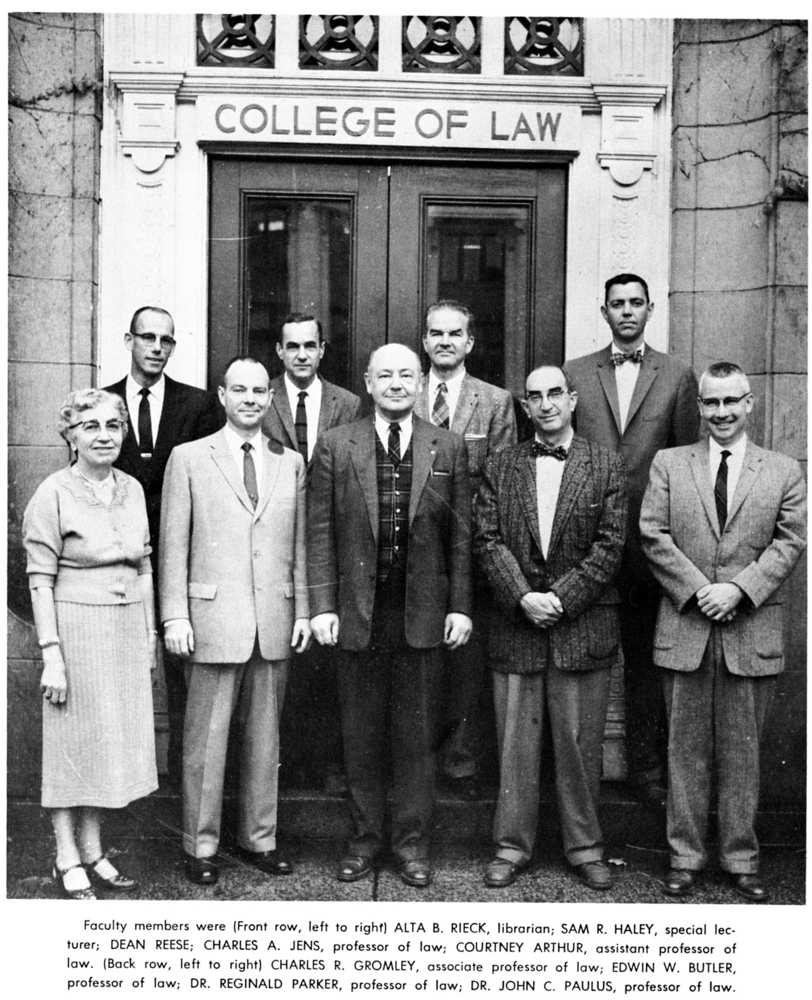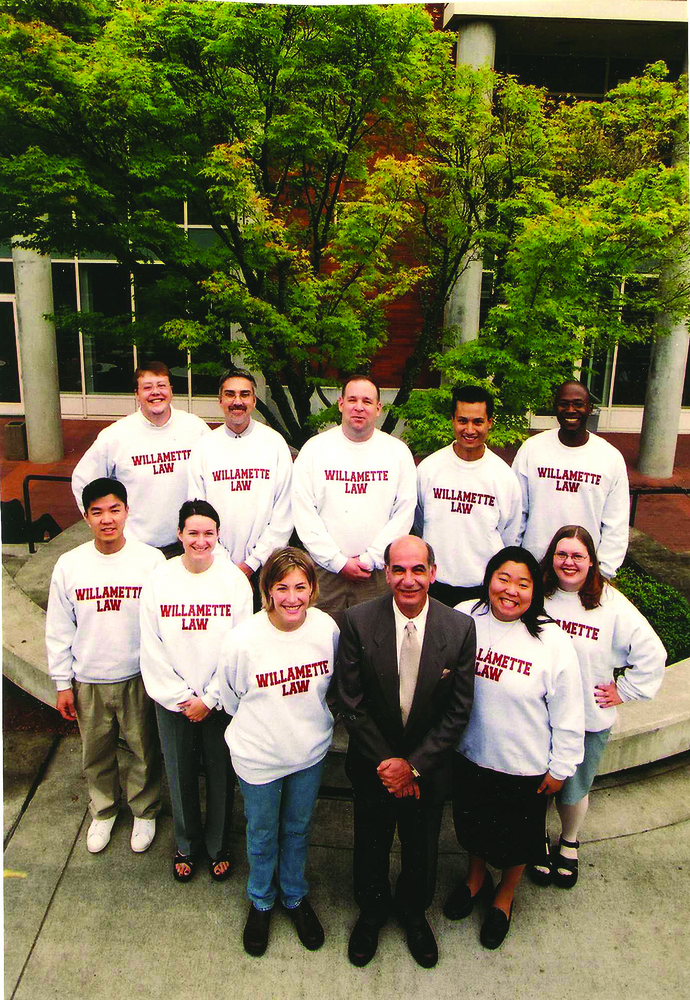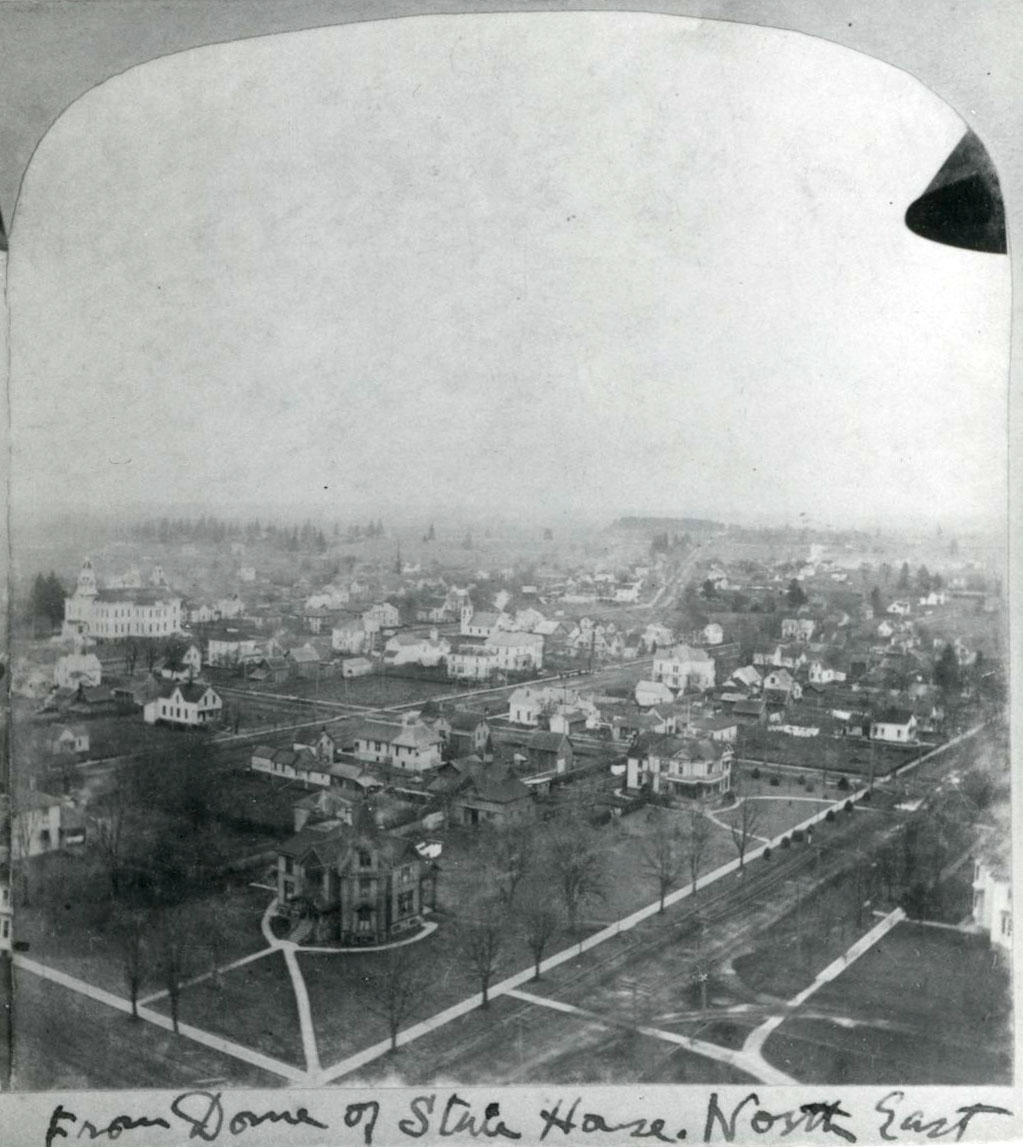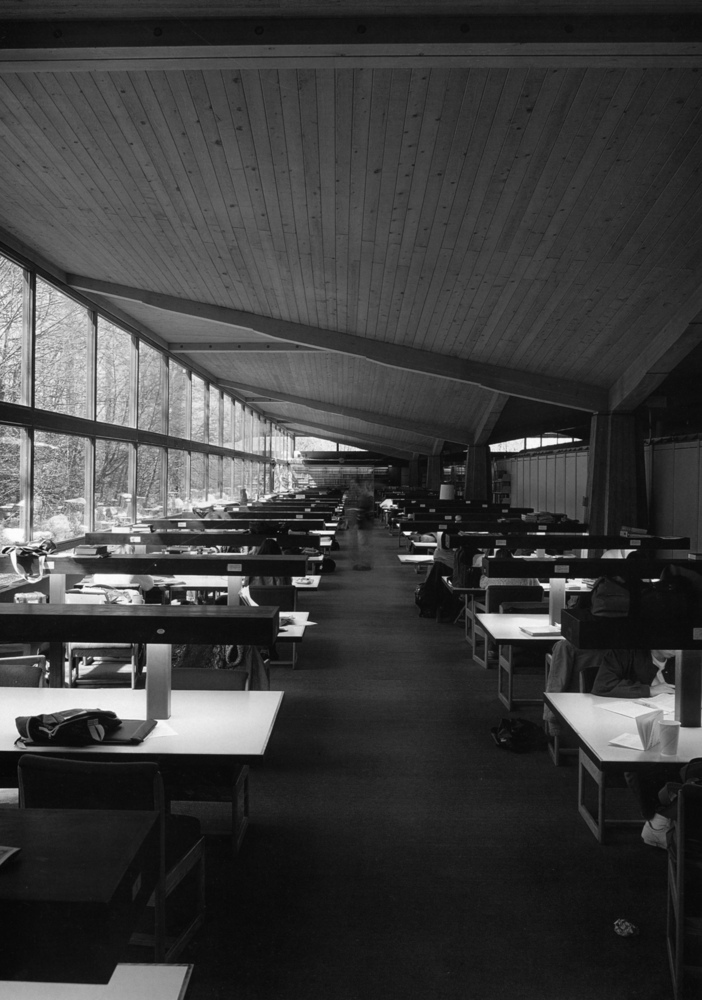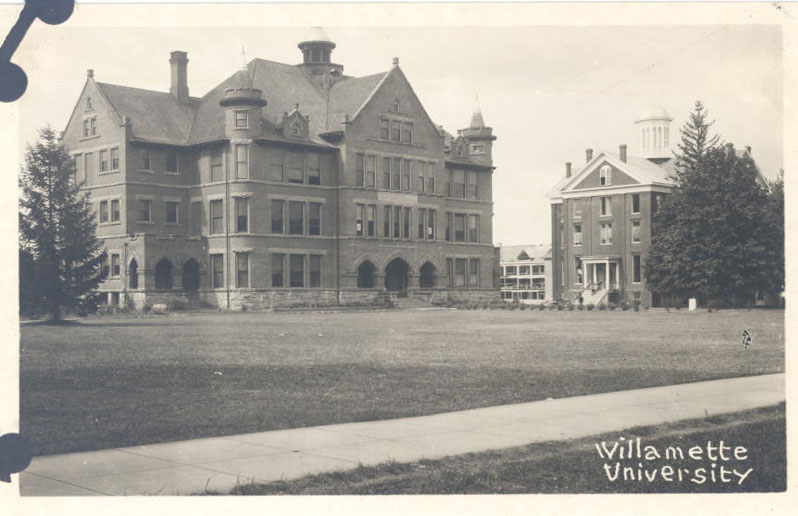In July 1866, the Reverend Luther T. Woodward reported to the Willamette University board of trustees that several prominent Oregonians wanted to establish a law department at the school. The Oregon Conference of the Methodist Church, which oversaw the university, gave full approval to this action. Matthew P. Deady, a distinguished jurist, taught the first formal courses in jurisprudence, beginning in the 1870s. In 1883, the university established the College of Law, offering a formalized law program leading to the Bachelor of Laws (LL.B.). It was the second law school established in the West and the first in the Northwest.
William Marion Ramsey, first dean of the college, chose the faculty from the law firms in Salem. In 1886, Charles A. Packenham of Idaho became the first alumnus, and the class of 1898 included Willamette's first two women law graduates, Olive S. England and Gabrielle Clark.
In the early 1900s, prospective students presented themselves the day before the term began and were examined as to their qualifications. If they were high school graduates, admission was fairly certain. If not, the would-be student could take an equivalency examination or register for classes at the university. Two certificates attesting to the student's moral fitness to pursue law were required of all who were not personally known to a member of the faculty. By 1930, entering students had to have two years of college, and graduation required 1,080 hours of instruction.
Willamette University College of Law was accredited by the American Bar Association in 1938 and achieved full accreditation by the Association of American Law Schools in 1946. A year later, the College of Law established the first legal aid clinic in the West. The college gained national prominence in 1959 when its students won the National Moot Court Championship. That same year, the Willamette Law Journal (now the Willamette Law Review) started work on its first issue.
In 1967, the College of Law moved into the Truman Wesley Collins Legal Center. The center was remodeled in the early 1990s, and a new building was constructed, more than doubling the school's square footage. U.S. Supreme Court Justice Sandra Day O'Connor participated in a rededication ceremony in 1992. During the 1970s and 1980s, enrollment climbed to 400 students, taught by 16 full-time and more than a dozen part-time faculty. The number of women students rose to 40 percent.
The Willamette Center for Dispute Resolution was established in 1983 and administers the Certificate Program in Dispute Resolution, one of the top ten such programs in the country. In the late 1990s, the Legislative Assembly created the Oregon Law Commission to conduct a program of law reform; it has been housed at Willamette's law school since 1999. In 2002, the law school established the Willamette Center for Law and Government, giving students the opportunity to work with state and city government.
In 2003, the university acquired the Carnegie building on the corner of Winter and State streets and transformed it into the Oregon Civic Justice Center. U.S. Supreme Court Justice Ruth Bader Ginsburg helped open the new building in September 2008.
The College of Law offers four degree programs: the Doctor of Jurisprudence (J.D.), the Joint Degree Program (J.D./M.B.A.), Master of Legal Studies (MLS), and an LL.M. in transnational law. Students can earn certificates in law and government, sustainability law, health law and business, and international and comparative law. As of 2023, the law school has a student body of approximately 1,868 students. Nearly half of the students are women, and 37 percent are students of color.
-
![The Oregon Civic Justice Center, dedicated Sept. 2008. Built in 1912, the structure served as Salem's public library until the early 1970s.]()
-
![Charles A. Packenham was the first alumnus of Willamette's law school, graduating in 1886.]()
-
![Olive S. England was one of Willamette's first two women law graduates, both of whom were in the class of 1898.]()
-
![1903 Willamette Univ. law faculty (center) Dean John W. Reynolds, (clockwise from left) George G. Bingham, A.O. Condit, W.T. Slater, and John Bayne.]()
-
![Gatke Hall, home to the College of Law from 1939 to 1967, shown here as the Salem Post Office, being moved in 1938.]()
-
![Students participating in the annual Moot Court Competition, 1940.]()
WU Law, moot court, 1940.
Students participating in the annual Moot Court Competition, 1940. Courtesy Willamette Univ. Law School -
![College of Law faculty standing outside Gatke Hall, 1960.]()
-
![Artist rendering of the expanded Truman Wesley Collins Legal Center, 1991.]()
WU Law, Collins Legal Ctr, 1991.
Artist rendering of the expanded Truman Wesley Collins Legal Center, 1991. Courtesy Willamette Univ. Law School -
![Symeon C. Symeonides, the 19th and current dean of the College of Law, with students, 1999.]()
WU Law, Symeonides, Symeon, 1999.
Symeon C. Symeonides, the 19th and current dean of the College of Law, with students, 1999. Courtesy Willamette Univ. Law School -
WU Law, graduation, 2007.
Willamette University College of Law graduation procession, 2007. Courtesy Willamette Univ. Law School
Related Entries
-
![City of Salem]()
City of Salem
Salem, the capital of Oregon, is located at a crossroads of trade and t…
-
![Lewis & Clark Law School]()
Lewis & Clark Law School
In 1883, British scholar Richard Hopwood Thornton and Matthew Paul Dead…
-
![Matthew Deady (1824-1893)]()
Matthew Deady (1824-1893)
Matthew Paul Deady was a lawyer, politician, and judge in the Oregon Te…
-
![Willamette University]()
Willamette University
Willamette University, the oldest university in the West, was founded i…
Map This on the Oregon History WayFinder
The Oregon History Wayfinder is an interactive map that identifies significant places, people, and events in Oregon history.
Further Reading
Becka, Anne Marie, ed. Celebrating 125 Years of Outstanding Legal Education and Bar Leadership. Salem, Ore.: Willamette University College of Law, 2008.


